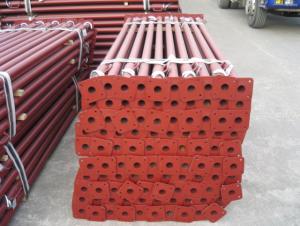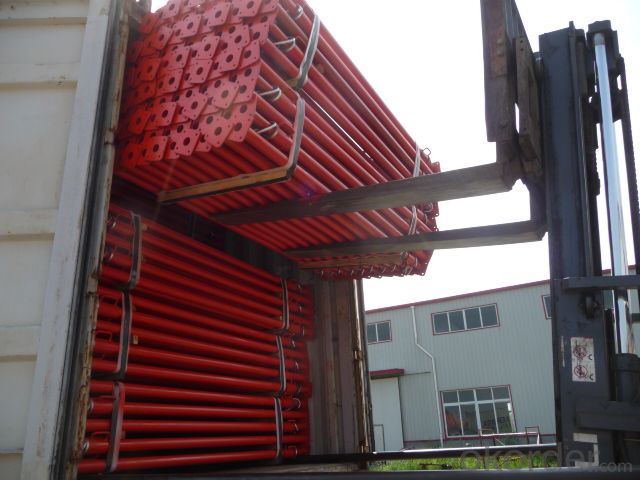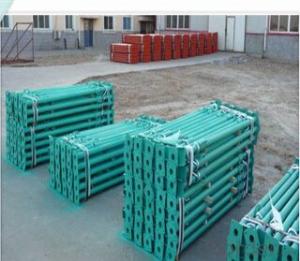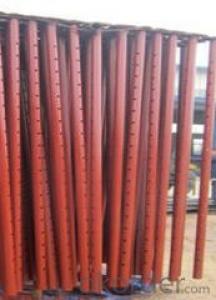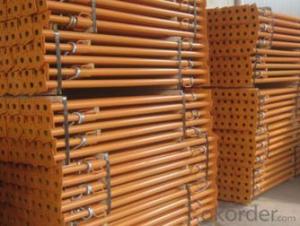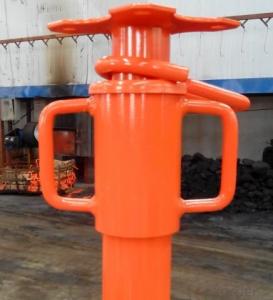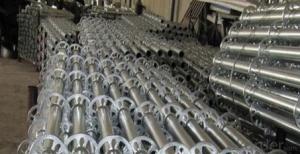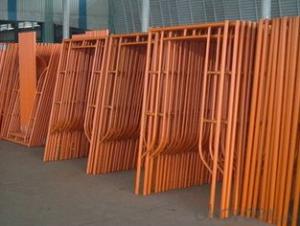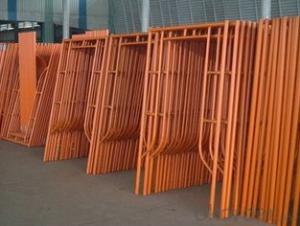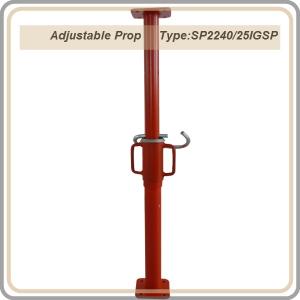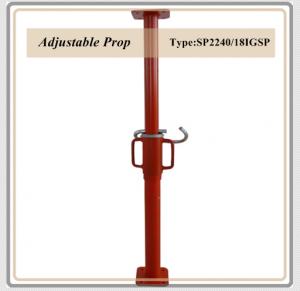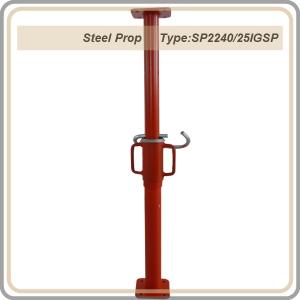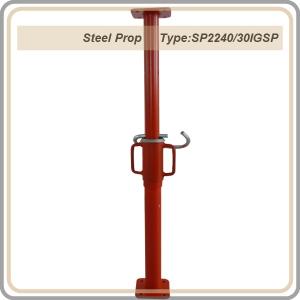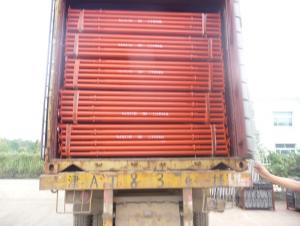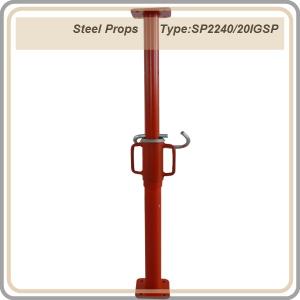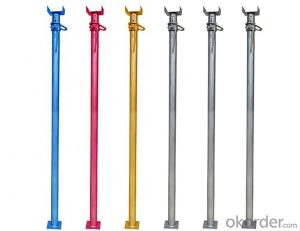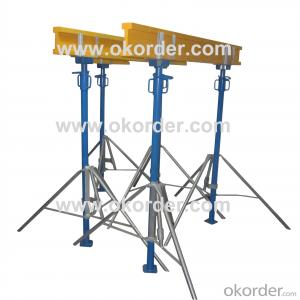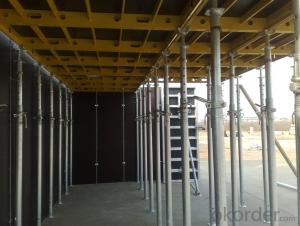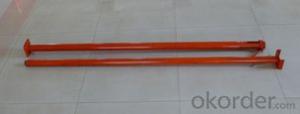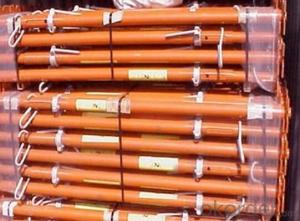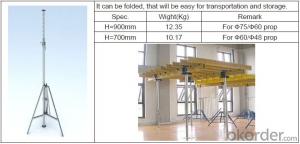Export Adjustable Props/ red color prop 2.2-4M
- Loading Port:
- China Main Port
- Payment Terms:
- TT or LC
- Min Order Qty:
- 1680 Piece/Pieces pc
- Supply Capability:
- 10000 pc/month
OKorder Service Pledge
OKorder Financial Service
You Might Also Like
Description
1. Length 2200-4000mm
2. Outer tube diameter 56mm
3. Inner tube diameter 48mm
4. Tube material : Q235
5. Tube thickness : 2.0mm
6. weight : 11kgs
7. square plate : 120*120*4mm
8. Italian type nut
9. G-pin 12
10. Painted surface
11. Color : as customer 's request . red / blue / green / orange/ brown
Packaging & Delivery
| Packaging Details: | packaging :50pcs / bale container : 1680pcs / 20ft |
|---|---|
| Delivery Detail: | 20-30days after receive deposit |
Specifications
Adjustable props / construction prop
Height 2.2-4M
Italy type painted props
Adjustable props
Shoring props
Construction scaffold steel prop
Scaffold props
Telescopic steel props
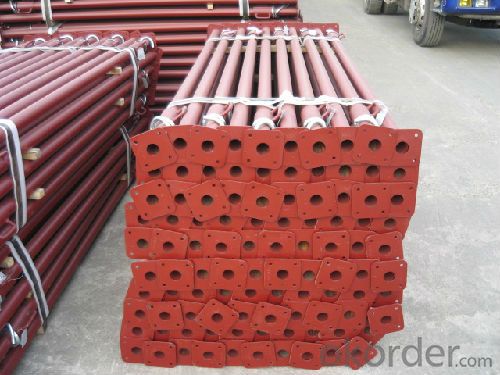
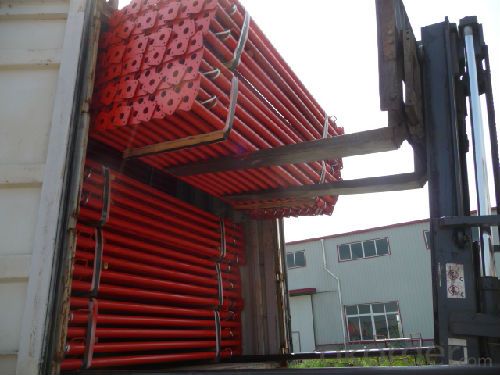
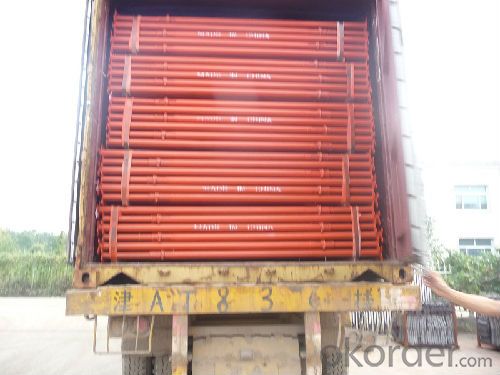
Product introduce
Steel Prop is a labour and time saving device to support shuttering and centering.
It is made outer tube of 60mm (O. D.) & inner pipe of 48mm (O. D.)
or outer tube 56mm (O.D.) & inner pipe 48mm (O.D.) ,
or outer tube 48mm (O.D.) & inner pipe 40 mm (O.D.) moving in each other telescopically.
The surface has painted , powder , electric galvanized and hot dipped galvanized .
The height use of props by double staging is recommended upto 7000mm only .
Top and bottom plate are provided with nail holes for wooden beam or steel beam .
The top has square shape , flower shape or U-head , U-fork head .
U-head can use fix or adjustable .
- Q: What are the standard safety regulations for using steel props?
- The standard safety regulations for using steel props include ensuring proper installation and alignment, regular inspection for signs of damage or wear, using appropriate load-bearing capacity props for the specific application, and following manufacturer's guidelines for safe usage. Additionally, it is essential to provide adequate bracing and support to prevent accidental collapse, maintain a clear and safe working area, and train personnel on proper handling and dismantling procedures.
- Q: Can steel props be used to support ceilings?
- Yes, steel props can be used to support ceilings. Steel props, also known as adjustable steel props or steel acrow props, are commonly used in construction to provide temporary support to ceilings, walls, and other structural elements. These props are adjustable in height, making them suitable for various ceiling heights. They are strong and sturdy, capable of bearing heavy loads, and can be easily installed and adjusted to provide the necessary support during construction or renovation projects.
- Q: Are steel props suitable for supporting temporary exhibition structures or pavilions?
- Indeed, steel props prove to be a fitting choice when it comes to supporting temporary exhibition structures or pavilions. Renowned for their strength, durability, and ability to withstand substantial loads, steel props emerge as the perfect solution for providing structural reinforcement to transient edifices. Their adaptability shines through as they can effortlessly be adjusted and customized to accommodate varying heights and lengths, thereby granting construction endeavors a desirable degree of flexibility. Moreover, steel props exhibit an innate resistance to inclement weather conditions, thereby guaranteeing the stability and safety of the exhibition structures or pavilions. Given their widespread usage in construction and their demonstrated capacity to bear heavy loads, steel props truly establish themselves as a dependable option for temporary structures.
- Q: How do you calculate the required thickness of steel props for a specific load?
- To calculate the required thickness of steel props for a specific load, you would typically consider the load capacity of the props, the length of the props, and the material properties of the steel being used. This can be done by using engineering formulas or consulting relevant design codes and standards. It is crucial to ensure that the props have sufficient strength and stability to support the intended load without any risk of failure or deformation.
- Q: What is the difference between these two kinds of construction? Why do I see the fixed steel support only the width difference, its length is fixed?
- Row pile support, pile support, pile anchor, row pile cantileverThe underground continuous wall support wall + support;3 cement soil retaining wall;3: steel sheet pile supporting transverse baffle pile, steel sheet pile support;
- Q: Can steel props be used in supporting temporary retaining walls?
- Indeed, temporary retaining walls can be supported by steel props. In construction endeavors, steel props are frequently employed to offer provisional support and stability to various structures, including walls, beams, and floors. Their adjustability and ease of installation make them ideal for bolstering temporary retaining walls. Steel props are engineered to endure substantial loads and furnish the essential support needed for retaining walls. Furthermore, their versatility renders them suitable for numerous construction applications. Nonetheless, it is imperative to seek guidance from a structural engineer or construction expert to ensure that the steel props are adequately sized and positioned to meet the precise demands of the temporary retaining wall.
- Q: How do steel props contribute to the overall quality of construction projects?
- Steel props contribute to the overall quality of construction projects by providing reliable and sturdy support for temporary structures, such as formwork and scaffolding. They help distribute the weight and load evenly, ensuring the stability and safety of the construction site. Additionally, steel props allow for easy adjustment and quick installation, improving efficiency and productivity during the construction process. Their durability and strength also enhance the longevity and structural integrity of the project, ultimately leading to a higher quality end result.
- Q: Are steel props adjustable? If so, how?
- Yes, steel props are adjustable. Steel props, also known as adjustable steel props or steel acrow props, are commonly used in construction to provide temporary support to walls, ceilings, beams, and other structural elements. The main benefit of steel props is their adjustability, which allows them to be set at various heights to accommodate different construction requirements. The adjustment mechanism of steel props typically consists of an outer tube and an inner tube. The outer tube is usually larger and has several holes at regular intervals. The inner tube, which fits inside the outer tube, has a pin that can be inserted into one of the holes in the outer tube to secure the desired height. To adjust a steel prop, you start by loosening the locking mechanism, which is usually a pin or a collar that holds the inner tube in place. Once the locking mechanism is loosened, you can extend or retract the inner tube to reach the desired height. After adjusting the height, you secure the inner tube by inserting the pin into the appropriate hole in the outer tube and then tighten the locking mechanism to ensure stability. The adjustability of steel props makes them versatile and suitable for a wide range of construction applications. They can be used to support different load capacities, and their adjustable feature allows for quick and easy installation, as well as modifications during the construction process.
- Q: Do steel props have any adjustable base plates for uneven surfaces?
- Yes, steel props typically have adjustable base plates that can accommodate uneven surfaces. These base plates are designed to be adjustable in order to provide stability and support on various types of terrain. They can be easily manipulated to ensure that the steel prop is securely positioned, even on uneven ground. This adjustability feature is particularly important in construction and building projects where the ground may not be perfectly level.
- Q: How do you calculate the required number of steel props for a project?
- To calculate the required number of steel props for a project, several factors need to be considered. First, determine the total load that the props will need to support. This can be done by calculating the weight of the structure or materials that will be placed on the props. Next, determine the maximum allowable load per prop. This information can usually be obtained from the manufacturer or supplier of the props. The maximum load typically depends on factors such as the prop's dimensions, material strength, and design. Once you have the total load and maximum allowable load per prop, divide the total load by the maximum load per prop. This will give you the minimum number of props required for the project. It's important to always round up to the nearest whole number to ensure sufficient support. Additionally, consider any safety factors or design requirements that may affect the number of props needed. For example, if the structure requires additional stability or if there are specific spacing requirements, these factors should be taken into account when calculating the number of props. Finally, it's always recommended to consult with a structural engineer or relevant professional to ensure accurate calculations and to comply with any local building codes or regulations. They can provide specific guidance based on the project's unique requirements and specifications.
Send your message to us
Export Adjustable Props/ red color prop 2.2-4M
- Loading Port:
- China Main Port
- Payment Terms:
- TT or LC
- Min Order Qty:
- 1680 Piece/Pieces pc
- Supply Capability:
- 10000 pc/month
OKorder Service Pledge
OKorder Financial Service
Similar products
Hot products
Hot Searches
Related keywords
